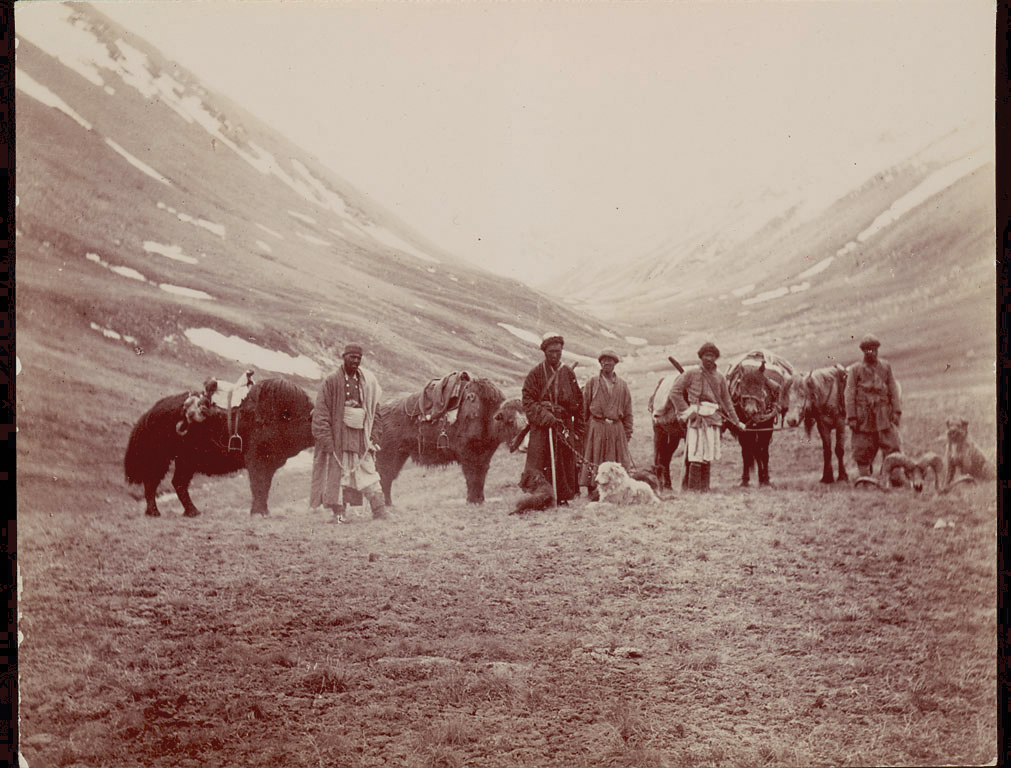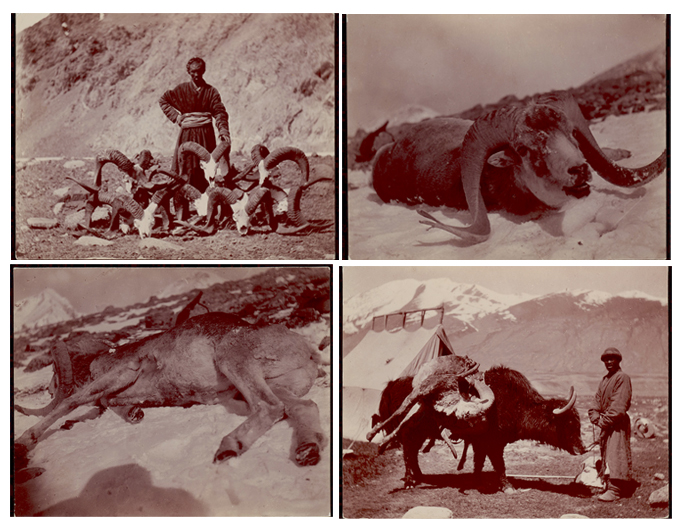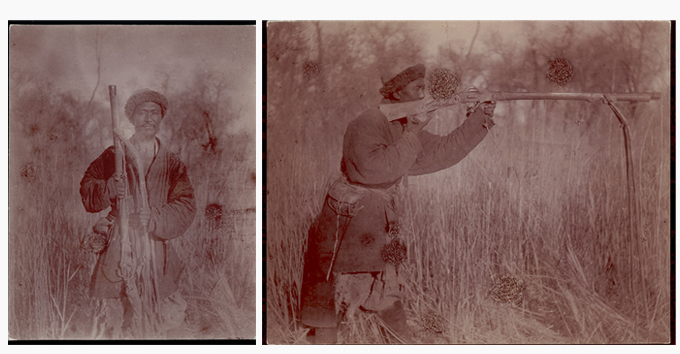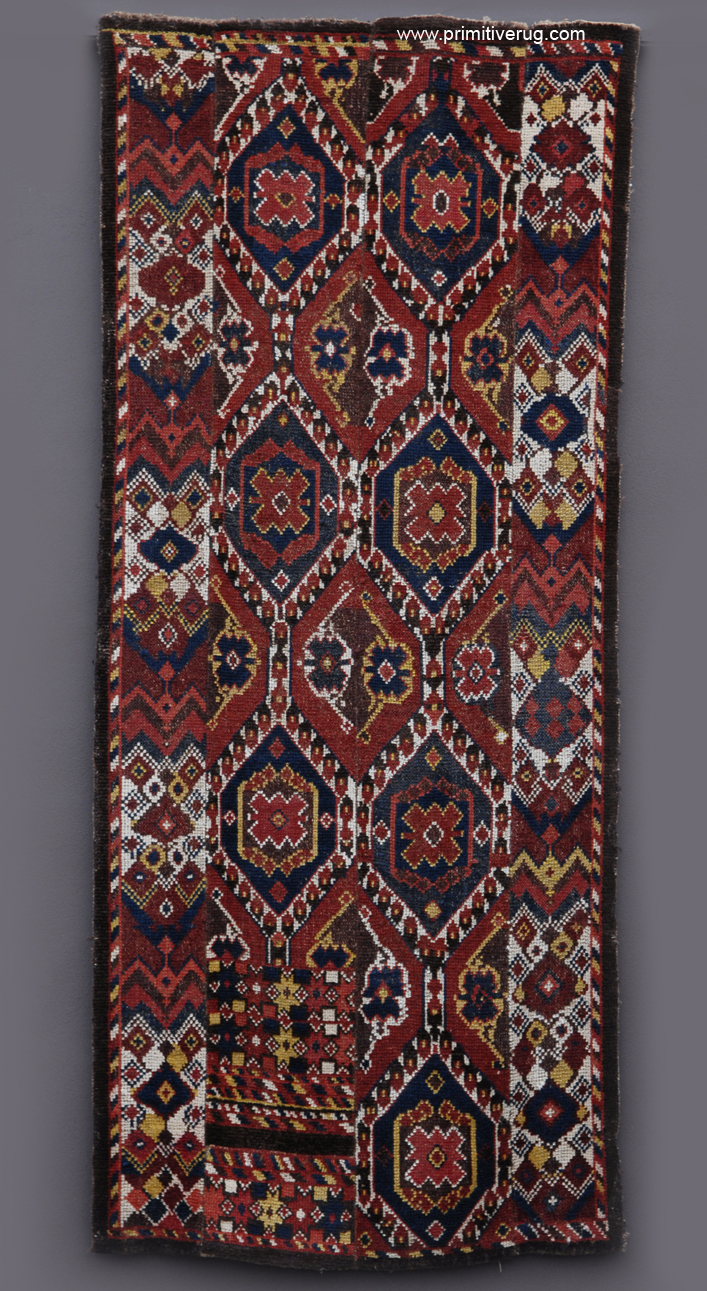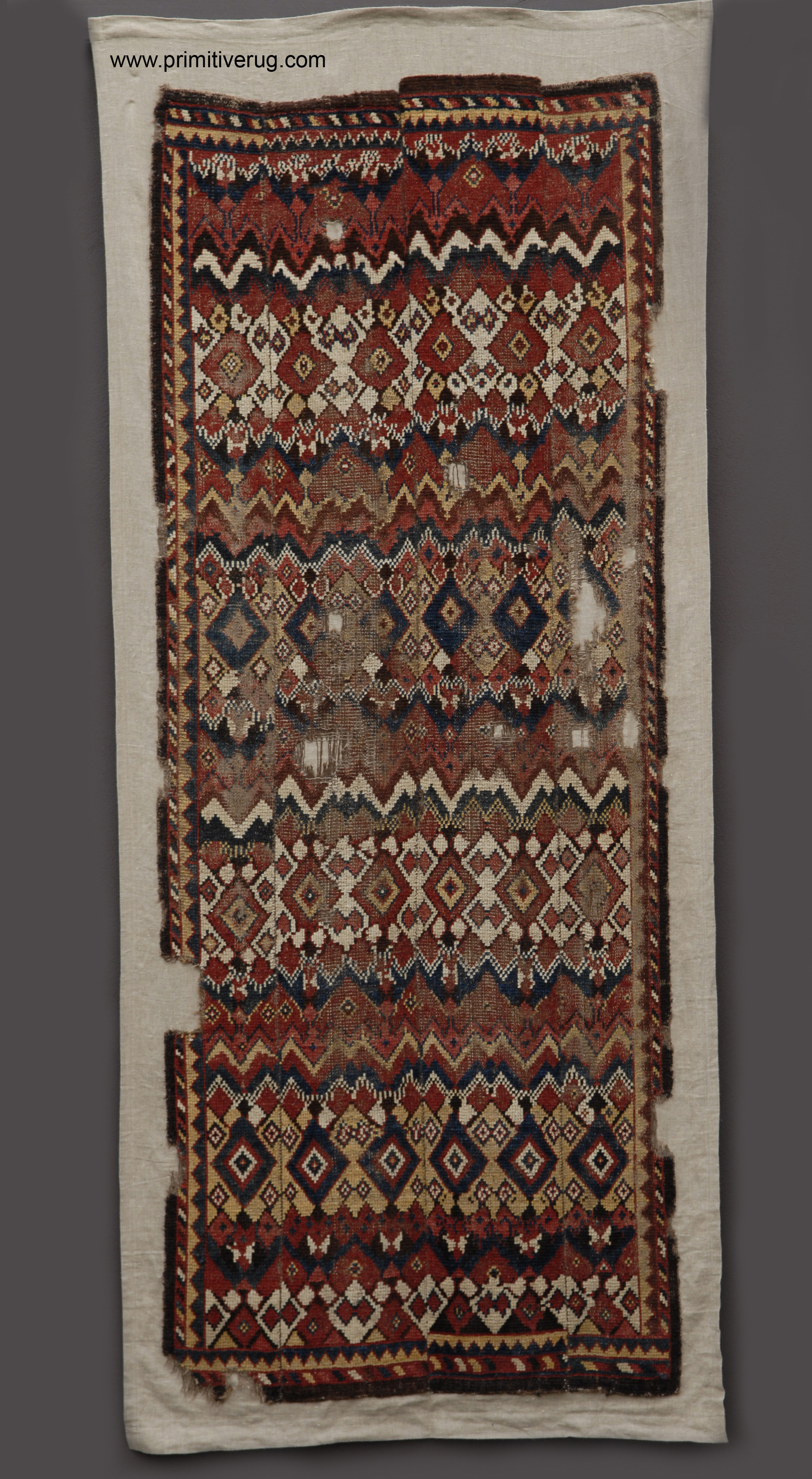Samarkand Uzbek Julkhirs Primitive Rug
Robert Cobcroft
 Chest Vendor seated on Uzbek Julkhirs, Julkhyrs primitive rug Samarkand Zaravshan district between 1865 and 1872 from the Turkestan Album.
Chest Vendor seated on Uzbek Julkhirs, Julkhyrs primitive rug Samarkand Zaravshan district between 1865 and 1872 from the Turkestan Album.
The high pile of the Julkhirs was favoured by some nineteenth Century merchants of Samarkand, the obvious attraction being a more comfortable rug for the long hours seated at the market place.
Variations of the motifs woven into this Julkhirs were repeated up to the end of the first quarter of the twentieth century. Some examples which followed were created with wool dyed in extremely bright and garish synthetic dyes, including a dazzling bright yellow, ultra bright deep green representative of a Christmas tree gone wrong, a dark cherry red and super saturated crimson plus an overwhelming bright pink.
Images from The Turkestan Album and those created by Prokudin-Gorskii give us a snapshot of life in Samarkand between 1865 and 1910, backing up Moshkova's 1. observations in Carpets of the People of Central Asia.
Below are all of the images published so far on this blog of Julkhirs in use in Samarkand during the late Nineteenth and early Twentieth century.
1. Moshkova, V. G. Carpets of the People of Central Asia. George O’Bannon, Arizona Lithographers Tucson, Arizona, 1996. 83
Image Attributions:
Courtesy of the Library of Congress, LC-DIG-ppmsca-14869, LC-DIG-prokc-21725, LC-DIG-ppmsca-14711, LC-DIG-prokc-21753 - LC-DIG-prok-11753, LC-DIG-ppmsca-14806
Illus. in: Turkestanskīĭ alʹbom, chastʹ ėtnograficheskai︠a︡..., 1871-1872, part 2, vol. 2, pl. 144.


